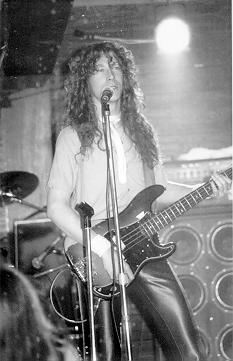Sunday, December 06, 2009
I guess it never ends...
I thought I was done. But as someone once said, "Never say never!" My two devils, this obsession to "twin" my basses, and that overdeveloped sense of symmetry, made me do it!
This summer, I was visiting my older son Jonathan in Quebec City. I traveled there to do something at the top of my list: see Sting play live. One morning I was checking my email and doing my usual eBay perusal and I noticed a late 70s fretless Fender Precision neck with a rosewood fretboard. It looked to be in pretty good shape and I decided to take a shot at it. Since we were going out that night, I put a reserve bid on it and thought that if I do get it, it would be a great deal, and if not, well...
We got back late that night, and I checked the auction to find that I had won! With shipping and currency exchange, it still came to just a touch over $200. According to the serial number (which is never a true indicator of age) it looks to be a 1977 or 1978; I would tend toward the latter. I went on the hunt and managed to find a set of after-market tuners that actually appeared to be period-correct. In keeping with the spirit of this budget-build, I found a 'P' bass body for $99, and gathered the rest of the hardware (bridge, pots, knobs, and pickguard).
With all the money I saved, I decided to splurge on a good pickup for it. I've developed a fondness for Seymour Duncan pickups and I have a friend in Kentucky who's become my source. After a little research, I decided on the SPB-3. It has a hotter-than-average output, and the frequency response has that "smiley eq" configuration built in.
I cleaned up the neck and spot-filled the more pronounced scratches and dings to smooth out the back of it. The fretboard itself was in surprisingly good shape for one this age, and all I did to it was clean and condition it with linseed oil. The body, made of ash with very prominent and pronounced grain lines, was stained a light red and then cleared with several coats of Varathan Diamond (a water based polyurethane finish).
Assembly of the parts was marred by only one small hitch: for the first time, I had to shim the body's neck cavity to get the neck to align properly. Without that, no amount of fiddling with the height adjustment screws on the bridge could make the action low enough to make the bass anywhere near playable. (I've found that with fretlesses, you can get the action very low, and if you play with a lighter touch, you won't get any string buzz, only the lovely, characteristic "mwah" added to the note(s).



This summer, I was visiting my older son Jonathan in Quebec City. I traveled there to do something at the top of my list: see Sting play live. One morning I was checking my email and doing my usual eBay perusal and I noticed a late 70s fretless Fender Precision neck with a rosewood fretboard. It looked to be in pretty good shape and I decided to take a shot at it. Since we were going out that night, I put a reserve bid on it and thought that if I do get it, it would be a great deal, and if not, well...
We got back late that night, and I checked the auction to find that I had won! With shipping and currency exchange, it still came to just a touch over $200. According to the serial number (which is never a true indicator of age) it looks to be a 1977 or 1978; I would tend toward the latter. I went on the hunt and managed to find a set of after-market tuners that actually appeared to be period-correct. In keeping with the spirit of this budget-build, I found a 'P' bass body for $99, and gathered the rest of the hardware (bridge, pots, knobs, and pickguard).
With all the money I saved, I decided to splurge on a good pickup for it. I've developed a fondness for Seymour Duncan pickups and I have a friend in Kentucky who's become my source. After a little research, I decided on the SPB-3. It has a hotter-than-average output, and the frequency response has that "smiley eq" configuration built in.
I cleaned up the neck and spot-filled the more pronounced scratches and dings to smooth out the back of it. The fretboard itself was in surprisingly good shape for one this age, and all I did to it was clean and condition it with linseed oil. The body, made of ash with very prominent and pronounced grain lines, was stained a light red and then cleared with several coats of Varathan Diamond (a water based polyurethane finish).
Assembly of the parts was marred by only one small hitch: for the first time, I had to shim the body's neck cavity to get the neck to align properly. Without that, no amount of fiddling with the height adjustment screws on the bridge could make the action low enough to make the bass anywhere near playable. (I've found that with fretlesses, you can get the action very low, and if you play with a lighter touch, you won't get any string buzz, only the lovely, characteristic "mwah" added to the note(s).



